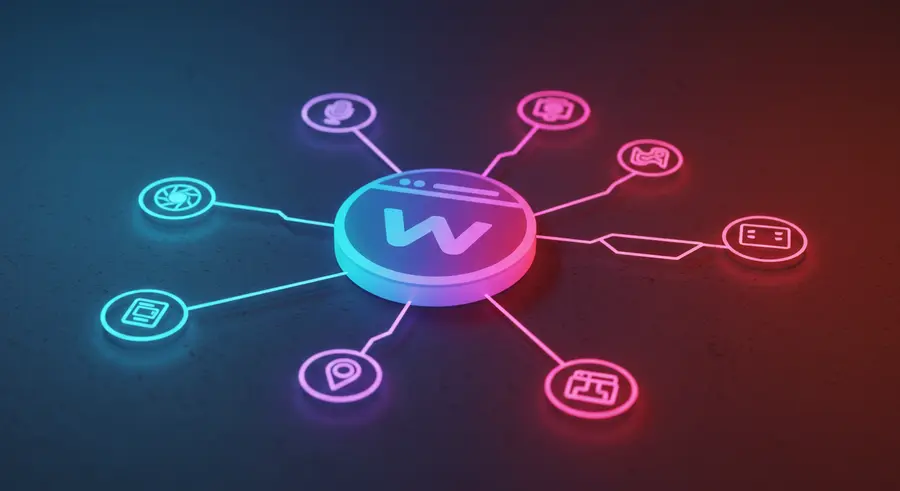Appearance

Welcome, fellow innovators and web enthusiasts! 👋 Today, we're taking a giant leap beyond the basics of Progressive Web Apps (PWAs) to explore their most cutting-edge capabilities. You might already know that PWAs offer incredible benefits like offline access and installability, bridging the gap between web and native applications. But what if I told you that PWAs are now gaining the power to interact deeply with device hardware and the underlying operating system? Get ready to unlock a new realm of possibilities!
💡 Beyond the Browser: Why Advanced Capabilities Matter
For a long time, web applications were confined to the browser's sandbox, limiting their access to device features that native apps enjoyed. This often meant developers had to build separate native applications for richer experiences. However, with the continuous evolution of web standards and APIs, PWAs are breaking free from these constraints.
The ability for PWAs to access hardware and integrate with the OS means:
- Richer User Experiences: Create applications that feel truly native, responding to user actions with device-specific feedback.
- Increased Productivity: Enable web-based tools (like photo editors or IDEs) to work directly with local files.
- Seamless Integration: Allow PWAs to become first-class citizens on a user's device, handling files, sharing content, and receiving notifications like any installed application.
🌐 Key Advanced PWA Capabilities
Let's dive into some of the most exciting advanced capabilities that are transforming PWAs:
📂 File System Access API: Your PWA, Your Local Files!
Imagine a web-based text editor that can open and save files directly to your computer's hard drive, just like a desktop application. The File System Access API makes this a reality!
This API allows your PWA to:
- Open Files: Users can grant permission for your PWA to open specific files or directories.
- Save Files: Your PWA can save changes back to existing files or create new ones on the user's local file system.
- Directory Access: Manage entire folders, which is crucial for applications like IDEs or media organizers.
javascript
async function openLocalFile() {
try {
const [fileHandle] = await window.showOpenFilePicker();
const file = await fileHandle.getFile();
const contents = await file.text();
console.log('File Content:', contents);
// Now you can display or process the file content in your PWA
} catch (error) {
console.error('Error opening file:', error);
}
}
async function saveLocalFile(content) {
try {
const fileHandle = await window.showSaveFilePicker();
const writableStream = await fileHandle.createWritable();
await writableStream.write(content);
await writableStream.close();
console.log('File saved successfully!');
} catch (error) {
console.error('Error saving file:', error);
}
}This is a game-changer for content creation tools, image editors, and development environments moving to the web!
🔗 Web Share Target API: Sharing Content Effortlessly
The Web Share Target API allows your PWA to register itself as a share target on the operating system. This means other applications (native or web) can share content directly with your PWA, just like they would with any installed app.
For example, a user could share an image from their gallery app directly to your PWA for editing or uploading.
📞 Contact Picker API: Accessing User Contacts (with Permission)
For applications that require contact information, the Contact Picker API provides a secure and user-friendly way to access selected contacts from the user's device. The user always maintains control, choosing which contacts to share.
💳 Web Payment API: Streamlined Transactions
While not directly hardware access, the Web Payment API significantly enhances the PWA experience by integrating with the device's payment methods. This provides a fast, secure, and familiar payment flow, reducing friction for e-commerce PWAs.
📸 Hardware Access: Camera, Microphone, and Beyond
Modern PWAs can leverage standard web APIs to access device hardware, provided the user grants permission:
- Camera and Microphone: Use
getUserMediato access the device's camera and microphone for video conferencing, QR code scanning, or audio recording. - Geolocation: Utilize the Geolocation API to get the user's location, perfect for mapping or location-aware services.
- Sensors: Access device sensors like accelerometer, gyroscope, and ambient light sensor for richer interactive experiences.
These capabilities open doors for highly interactive and contextual PWAs that can adapt to the user's environment.
🚀 The Future is Now: Building with Advanced PWAs
The evolution of PWAs with these advanced capabilities signifies a powerful shift in web development. They are no longer just "websites that feel like apps"; they are truly capable applications that can compete with and even surpass native experiences in many scenarios due to their inherent web advantages (discoverability, no app store hurdles, single codebase).
If you're curious to learn more about the foundational aspects of PWAs and how they bring web and native together, be sure to check out our previous article: The Power of Progressive Web Apps (PWAs).
The journey of PWAs is continuously evolving, with new APIs and capabilities emerging regularly (keep an eye on Project Fugu! 🐠). Embracing these advanced features will allow you to build truly impactful and engaging web applications that redefine user expectations.
What advanced PWA capabilities are you most excited to explore? Share your thoughts below! 👇